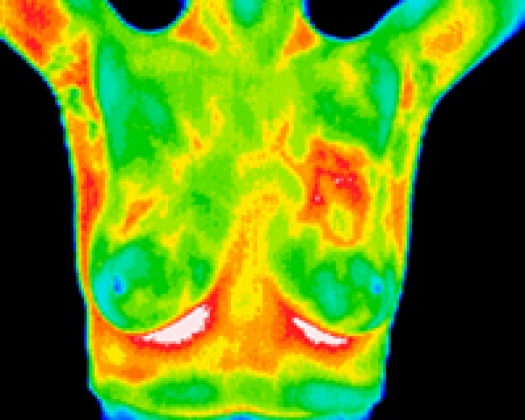By Dr. Veronique Desaulniers

The worldwide low thyroid function epidemic is getting more and more press these days. But adrenal fatigue and its connection to major disease like cancer? Not so much. Research says there is definitely a link.
What are the Adrenals?
The adrenals are glands that rest just above the kidneys. They are the main production center for stress hormones, namely cortisol and adrenaline. What a lot of people don’t know, however, is that the adrenals also produce the reproductive hormone progesterone. According to many studies including a 2007 Italian investigation published in the journal Breast Cancer Research, progesterone is not only responsible for reproductive health. It is also a powerful cancer-protector.
What Happens During Chronic Stress
You may have heard of the “flight or fight” response. In fact, you have probably experienced it yourself (maybe even quite recently!). You may also know that when the body goes into this mode, it pushes out cortisol and adrenaline at a high rate, diverting energy and blood flow from processes like digestion to the extremities so you can run from that tiger (or your boss).
When you are “stressed out,” the body amps up production of cortisol and adrenaline in the adrenals to give you the best “chance of survival.” In the process, however, the adrenals also turn production of progesterone way down. When this occurs, a woman’s body doesn’t produce enough progesterone for puberty if she is growing nor lactation if she is pregnant.
Being in constant stress mode, also called chronic stress, can also lead to adrenal fatigue or “burn out.” Adrenal fatigue and burn out occur when the adrenal glands are unable to keep up with the demands for what it produces. It is estimated that in today’s stressed world, upwards of 80% of Americans may have adrenal fatigue. Many may not even know it.
When stress is chronic and adrenal fatigue sets in, this also means a greater cancer risk for any woman, regardless of her age.
Three Things You Can Do to Heal Your Adrenals, Increase Progesterone Production and Prevent Cancer!
A joint study conducted by Cambridge University, the University of Texas and others found that progesterone inhibited estrogen-mediate cancer cell growth. An important first step for balancing progesterone naturally is to heal your adrenals. Here are a few simple ways to do this:
Adrenal & Thyroid Activity
The adrenal glands produce a variety of hormones in order for the body to function. These include catecholamines such as adrenaline, mineralcorticoids such as aldosterone and glucocorticoids such as cortisol. The thyroid secretes T4 and T3, hormones that have a major regulatory effect upon metabolic processes.
Many clinicians believe that low thyroid function (hypothyroidism) is becoming an epidemic. A very important parallel is that excessive, depleted or exhausted adrenal activity is oftentimes the underlying cause of low thyroid function. At the very least, adrenal function absolutely must be taken into account when thyroid issues are present, and the opposite applies as well.
The 3 mineral ratios on a hair tissue mineral analysis that identify the “effect” of adrenal and thyroid function are:
- Na/K (sodium/potassium): adrenals
- Na/Mg (sodium/magnesium): adrenals
- Ca/K (calcium/potassium): thyroid
The difference in a hair test is that the “effect” of adrenal and thyroid activity is a measurement through mineral activity. This is much different than a “free-fractioned hormone” in the saliva or a “protein-bound” hormone in the blood. Minerals are the “sparkplugs” of biochemical activity, and this includes hormones. Therefore a mineral pattern on a hair test coupled with a specific blood test is a much more accurate “predictor” of thyroid and adrenal activity than a just blood or saliva test. The saliva test may show you a current hormone level now, but the hair shows you a 3 month trend and a pattern of where the body is headed.
The hair test above shows a very elevated Calcium/Potassium ratio. High levels of Ca/K are reflective of LOW THYROID activity. This person was diagnosed with hypothyroidism 3 months before this test was taken by their physician using blood chemistry. This hair test provides a very accurate confirmation of the trend for hypothyroidism, as well as mineral activity.
What To Do About These Issues?
These are always the ultimate question with the hair analysis biopsy: what to do? First of all, by knowing a person’s Metabolic Type©, you are able to understand the most essential nutrient requirements.
What the hair & blood test test CAN do is to help to prioritize a strategy. Such as the needs digestive support and liver support, blood sugar issues an HCL insufficiency. Some gentle thyroid and adrenal support would be helpful, as would supporting hydration with water, electrolytes and mineral salts.










